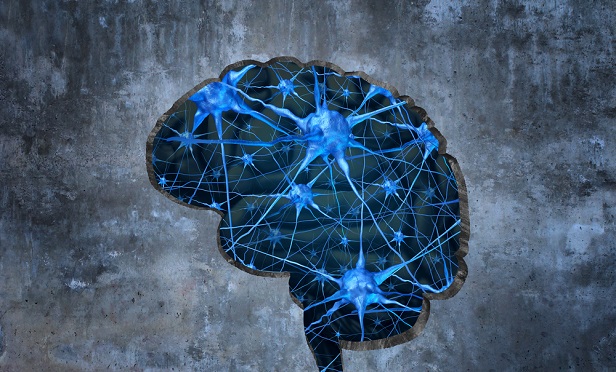 The study notes that the growth in diagnoses can be attributed in part to " the accumulation of people who are diagnosed with the condition and remain within the commercially insured population." (Image: Shutterstock)
The study notes that the growth in diagnoses can be attributed in part to " the accumulation of people who are diagnosed with the condition and remain within the commercially insured population." (Image: Shutterstock)
It appears that more young people are showing signs of early-onset dementia and Alzheimer's – but more research needs to be done to verify what's happening – and why, according to Blue Cross Blue Shield Association report, "Early-Onset Dementia and Alzheimer's Rates Grow for Younger Americans."
From 2013 to 2017, diagnosis rates of both forms of dementia in people aged 30 to 64 rose by 200 percent, to 131,000, among 48 million commercially insured members of Blue Cross Blue Shield companies. Broken down by age segment, the number diagnosed with these conditions increased 373 percent among 30- to 44-year-olds, 311 percent among 45- to 54-year-olds and 143 percent among 55- to 64-year-olds.
Related: Dementia cases expected to triple by 2050
But there is a caveat to this analysis, according to the association: "The numbers in this report represent a point-in-time measurement of the diagnosis of early-onset dementia and Alzheimer's disease among commercially insured American adults 30 to 64 years of age," the association writes. "Therefore, much of the growth in the diagnosis of these conditions over time can be attributed to the accumulation of people who are diagnosed with the condition and remain within the commercially insured population during the study period rather than to an actual increase in the rate of diagnosis year over year."
Still, the report lists concerning statistics among the population studied.
Early-onset dementia and Alzheimer's disease are more common in women, as this group accounted for 58 percent of those collectively diagnosed with either kind in 2017. Diagnosis rates for both conditions are rising in younger adults, with the average age of someone living with either form of dementia now at 49 years old.
"These health trends indicate a need for a focus on appropriate care and support for individuals with either form of dementia and support for their caregivers as the disease progresses," the authors write.
Indeed, the association cites St. John's University research, which found that nearly 16 million family members and friends provided more than 18 billion hours of unpaid care to persons with Alzheimer's disease in America, costing an estimated $221 billion.
"These added caregiving responsibilities are felt particularly by women, who make up 63 percent of this caregiving subset," the association writes in its press release announcing the report. "The added stress and time commitment these caregivers incur can also lead to depression, social isolation and financial stress."
The association's analysis also found that diagnosis rates of early-onset dementia and Alzheimer's disease are higher in the East, the South and parts of the Midwest, while western states show lower rates of diagnosis.
A particularly intriguing note within the report worth researching more: "There is not a definitive test for early-onset dementia or Alzheimer's disease, as diagnosis is primarily based on an individual's symptoms," the association writes. "As a result, people with early-onset dementia and Alzheimer's disease often undergo different forms of testing and treatment prior to diagnosis."
Specifically, 86 percent of people with early-onset Alzheimer's disease received brain imaging in the year prior to diagnosis; 57 percent of people with early-onset Alzheimer's disease filled an antidepressant medication in the year prior to diagnosis; and about 40 percent of people ultimately diagnosed with early-onset Alzheimer's disease were first diagnosed with early-onset dementia, cognitive or behavioral changes in the year prior.
"The increase in early-onset dementia and Alzheimer's diagnoses among a generation who typically wouldn't expect to encounter these conditions for several decades is concerning, especially since there is no cure for Alzheimer's disease," says Dr. Vincent Nelson, vice president of medical affairs for BCBSA. "Further education and research is needed to learn more about early-onset dementia and Alzheimer's, how to treat these conditions and what can be done to better prevent diagnoses."
Read more:
© 2025 ALM Global, LLC, All Rights Reserved. Request academic re-use from www.copyright.com. All other uses, submit a request to [email protected]. For more information visit Asset & Logo Licensing.








